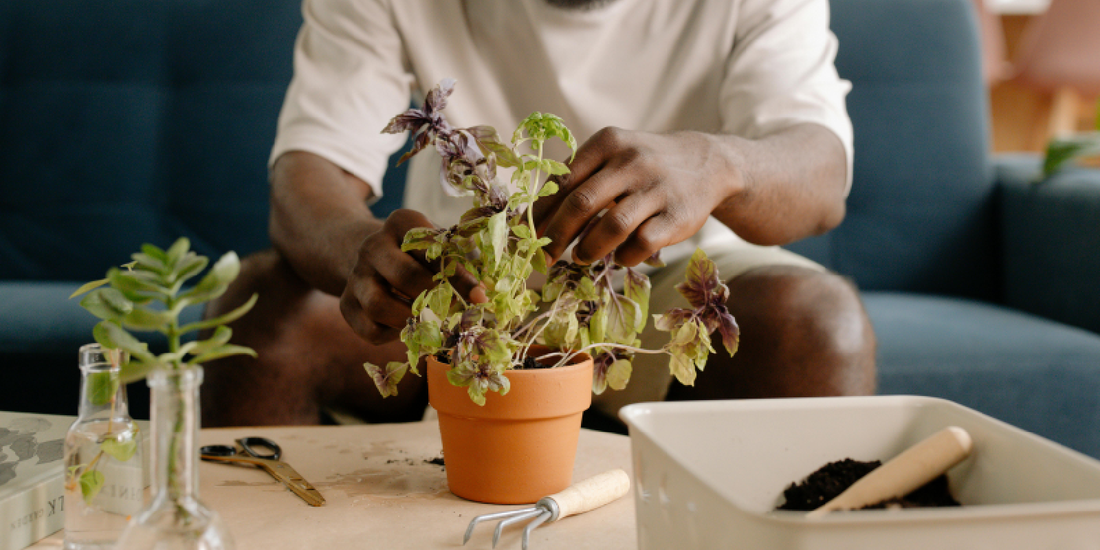
Understanding Photosynthesis with Grow Lights
Share
Indoor gardening has experienced a major transformation in recent years, largely thanks to advances in grow light technology. For plant enthusiasts who want to create a thriving indoor jungle, understanding photosynthesis and the role of grow lights is critical. With the amoyls VerdantGlow S-Shaped 8-Tier Plant Shelf with Grow Lights, homeowners and plant lovers can now design visually stunning indoor green spaces while ensuring optimal plant growth.
This article explores the fundamentals of photosynthesis, the science of how artificial light can replicate sunlight, and how products like VerdantGlow shelves can help create healthy, vibrant indoor plants year-round.
1. What Is Photosynthesis?
Photosynthesis is the biological process by which green plants, algae, and certain bacteria convert light energy into chemical energy. This process fuels almost all life on Earth. At its core, photosynthesis allows plants to take in carbon dioxide (CO₂) from the air and water (H₂O) from the soil, using light energy to transform them into glucose (sugar) and oxygen (O₂).
The general formula for photosynthesis is:
6CO₂ + 6H₂O + light → C₆H₁₂O₆ + 6O₂
Key players in this process are chlorophyll (the green pigment in leaves) and light photons. Without sufficient light, plants cannot produce the energy they need to grow, bloom, and reproduce.
2. Why Light Is Essential for Indoor Plants
For outdoor plants, sunlight provides the full spectrum of wavelengths necessary for photosynthesis. However, indoor plants often face challenges: limited light from windows, inconsistent exposure due to seasons, and shading from buildings or furniture.
Without adequate light, plants may exhibit:
- Leggy growth – stretching towards light sources.
- Yellowing leaves – reduced chlorophyll production.
- Stunted growth – lack of energy for root or leaf expansion.
- Weak blooms or no flowering – insufficient light intensity for reproductive growth.
This is where grow lights play a vital role. They replicate the sunlight spectrum, ensuring plants receive the right wavelengths needed to power photosynthesis indoors.
3. The Science of Grow Lights and Photosynthesis
Not all light is equally effective for photosynthesis. The most important wavelengths for plants fall within the Photosynthetically Active Radiation (PAR) range, spanning 400 to 700 nanometers.
- Blue light (400–500 nm): Stimulates chlorophyll production, root development, and vegetative growth.
- Red light (600–700 nm): Promotes flowering and fruiting stages.
- Green light (~550 nm): Less absorbed but still plays a role in leaf penetration and overall balance.
Modern grow lights, especially LED grow lights, are designed to provide a balanced spectrum that supports both vegetative and flowering stages of plant growth.
4. Benefits of Using Grow Lights for Indoor Photosynthesis
4.1 Consistent Light Exposure
Unlike natural sunlight that fluctuates, grow lights can be controlled with timers to provide consistent daily exposure, ensuring plants receive the 12–16 hours of light they need.
4.2 Year-Round Growth
Seasons and shorter daylight hours are no longer limitations. With grow lights, plants can thrive even in winter when natural light is scarce.
4.3 Energy Efficiency
LED grow lights use significantly less energy than traditional fluorescent or incandescent bulbs, reducing electricity costs while maximizing plant growth.
4.4 Balanced Spectrum
Quality grow lights simulate the full spectrum of sunlight, ensuring plants receive the blue and red wavelengths required for efficient photosynthesis.
5. The Role of amoyls VerdantGlow Plant Shelf
The amoyls VerdantGlow S-Shaped 8-Tier Plant Shelf with Grow Lights was designed to combine elegant home décor with functional plant growth support. Here’s how it enhances photosynthesis for indoor plants:
- Integrated Grow Lights: Each tier comes with LED grow lights, ensuring even coverage for all plants, from top to bottom.
- S-Shaped Structure: The unique design maximizes light exposure by preventing shading between levels.
- Eight Tiers of Space: Perfect for housing a wide variety of plants, from succulents to larger leafy greens.
- Energy-Saving LEDs: Designed to provide optimal PAR spectrum for photosynthesis without overheating.
- Space-Saving Design: At 62 inches tall, it fits neatly in corners while offering abundant growing space.
This combination of design and science makes it an excellent solution for modern urban gardeners who value both aesthetics and plant health.
6. How to Optimize Photosynthesis with Grow Lights
To maximize the benefits of grow lights and promote healthy photosynthesis:
- Adjust Light Distance: Place lights 6–12 inches above plants, adjusting as they grow to prevent leaf burn or stretching.
- Set a Light Schedule: Use a timer for 12–16 hours of daily exposure. Avoid continuous 24-hour light, as plants also need dark periods for respiration.
- Match Plants with Light Needs: Herbs and leafy greens thrive with blue-rich light, while flowering plants need a red-light boost.
- Rotate Plants Regularly: Ensures even exposure to light, preventing uneven growth.
- Monitor Leaf Health: Yellowing or curling leaves may indicate too much or too little light.
7. Photosynthesis Beyond Growth: Boosting Indoor Ecology
By enabling photosynthesis indoors, grow lights don’t just promote plant growth—they also improve home environments:
- Air Purification: Healthy plants absorb CO₂ and release oxygen, improving air quality.
- Humidity Control: Plants release water vapor during transpiration, balancing indoor air moisture.
- Mental Well-Being: A lush green environment reduces stress, boosts mood, and increases productivity.
Thus, products like the VerdantGlow shelf do more than just grow plants—they create healthier living spaces.
8. Why amoyls Stands Out
While there are many plant shelves and grow light solutions on the market, amoyls distinguishes itself by merging scientific precision with modern design aesthetics. Customers are not only investing in plant health but also elevating their interior décor. The VerdantGlow collection is crafted for plant lovers who want functionality without sacrificing beauty.
9. Conclusion: Photosynthesis Empowered by Grow Lights
Understanding photosynthesis and the role of light is key to creating a successful indoor garden. With the right grow lights, plants can perform the same processes indoors as they do under natural sunlight.
The amoyls VerdantGlow S-Shaped 8-Tier Plant Shelf with Grow Lights provides the perfect harmony between style and science—ensuring that your indoor plants grow strong, healthy, and vibrant all year round.
By integrating grow lights into your living space, you are not only supporting photosynthesis but also cultivating a home filled with life, oxygen, and beauty.
